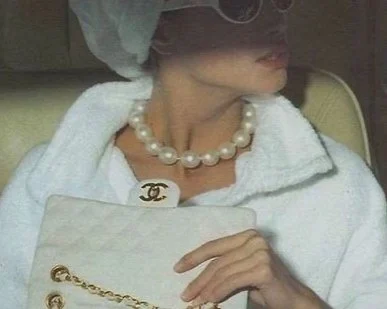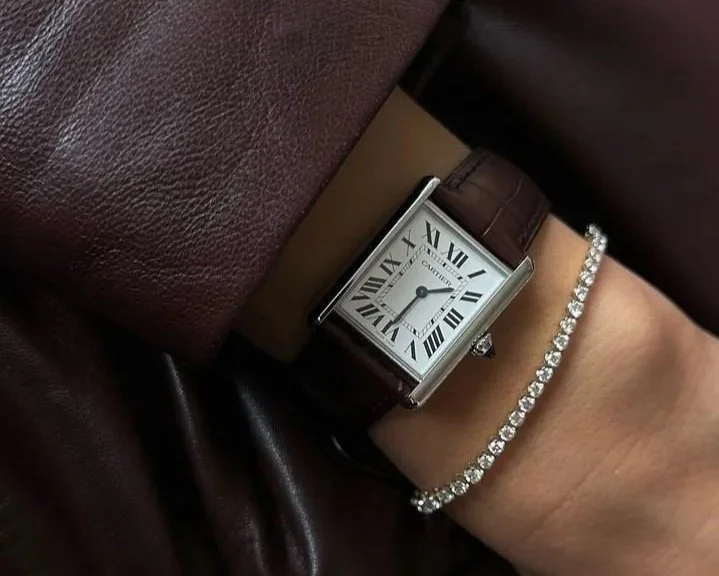Women at Hermès: Grace Wales Bonner and Nadège Vanhée Are Redefining Luxury Leadership
Hermès is continuing a strong era of luxury creative leadership with diverse women at the helm of its core businesses.
In the rarefied world of luxury fashion, Hermès’ recent announcements mark a milestone: another woman has been appointed Creative Director of Menswear, while a woman continues to set records at the helm of Womenswear.
This is compelling not only because of the individuals involved but because the broader industry remains largely stagnant. Among the top luxury houses, only 25% of creative director roles are held by women. Beyond Hermès, Chanel stands as a rare example that once had both a female CEO, Leena Nair, and a female creative director, Virginie Viard, serving simultaneously—an exception rather than the rule.
The appointment of a new male creative director at Chanel underscores how rare it still is for women to occupy fashion’s most powerful creative seats. That’s why this moment at Hermès matters: it signals a slow but significant shift in how luxury houses are beginning to think about leadership, creativity, and representation.
-
Introducing The Parlor, an exclusive repository of 100+ personal growth, self-care, and luxury living resources to help you thrive.
-
Explore The Dossier, our premium career and business intelligence platform for luxury industry professionals and brands.
Grace Wales Bonner: A Modern Mind for Luxury Menswear
In October 2025, Hermès announced that Grace Wales Bonner will join the house as Creative Director of Men’s Ready-to-Wear, succeeding Véronique Nichanian, whose remarkable 37-year tenure is coming to a close.
Bonner, a London-born designer of Jamaican heritage, graduated from Central Saint Martins in 2014, founded her eponymous label, and quickly became celebrated for a menswear vision that fuses refined tailoring, sportswear, and cultural heritage.
Her design ethos — craft + culture + context — aligns with Hermès’ artisanal core, yet promises fresh energy. The house statement describes: “Her take on contemporary fashion, craft and culture will contribute to shaping Hermès men’s style.”
Early responses in fashion media emphasize the historic nature of the appointment — she becomes one of the very few women (and first Black woman in a major European luxury house) to lead a menswear creative division. Her appointment signals that Hermès is not only upholding its legacy of measured change, but doing so in a way that opens the door wider for leadership diversity.
Meanwhile, Hermès’ women’s ready-to-wear division has been under the creative direction of Nadège Vanhée since the mid-2010s. During her tenure, womenswear and accessories has grown from representing 22% of the group’s business to 29% today.
Her aesthetic is one of subtle refinement: the Hermès woman is composed, confident, and impeccably crafted rather than overtly adorned. As Vanhée once remarked, “I wanted to make the coat as relevant as the Birkin bag.”
Recently honored by The Wall Street Journal Magazine Innovator Awards, Vanhée’s impact is both commercial and cultural. She has not only expanded one of Hermès’ fastest-growing divisions but also redefined what creative leadership in luxury can look like—measured, modern, and quietly revolutionary.
Women are Lacking in Creative Luxury Leadership
Despite obvious talent and influence, women remain vastly under-represented at the highest creative levels in luxury. A variety of reports show:
Only about 14% of creative directors across luxury brands in Europe and North America are women.
Among the top 30 luxury brands in the Vogue Business Index, only 25% of creative director roles were held by women.
In the broader creative industry, only 17% of creative director roles are held by women, despite women making up 60-70 % of design graduates.
These numbers highlight both how exceptional the Hermès appointments are and how much industry-wide gap remains. The fact that the consumer base of luxury is majority women makes the leadership imbalance all the more stark.
Why Hermès’ Leadership Model Matters
Why do the Hermès appointments matter beyond the headlines? Three reasons stand out:
Legacy with continuity. Hermès is known for its artisan roots, six-generation family ownership, and very long creative tenures (Nichanian’s 37 years, Vanhée’s decade-plus). The appointment of Wales Bonner is not a short-term stunt, but signals long-term trust and elevation.
Commercial success. As mentioned, under Vanhée, women’s ready-to-wear and accessories grew significantly to a high percentage of the Hermès overall business. This shows that creative leadership isn’t just symbolic—it correlates with business growth.
Alignment of values. Hermès emphasises craftsmanship, materials, and human-centred luxury. A female creative director who has grown the business and another diverse woman taking over menswear, suggests the brand values perspective, continuity, and freshness. The Hermès 2024 Gender Equality Index also shows representation among governance bodies which is 58% female.
In short: this isn’t tokenism—it’s integration of women into the core of creative power, and that sets a precedent for other luxury houses.
Elevate Your Life
Take our conscious luxury course and turn your life into a masterpiece of majestic moments — tailored to your distinct tastes and personal preferences.
What This Means for the Luxury Industry
This moment at Hermès holds layered significance:
Symbolic: Women in visible creative leadership positions sends a message of possibility and aspiration—particularly in an industry built on image and culture.
Substantive: When those appointments correlate with proven commercial performance (e.g., Vanhée’s tenure) and are supported by long-term strategy (e.g., Wales Bonner’s multi-year runway debut in 2027), they move beyond optics.
Structural challenge: The broader industry still faces the “glass ceiling” and “broken rung” where women reach mid-level but stall before top creative roles. Hermès’ example suggests one path: internal growth + elevated appointments rather than temporary role-fills.
The recent leadership news indeeds underlines a shift in luxury: refinement is not simply aesthetic, but structural. As someone with nearly 15 years in the luxury sector, I’ve observed the dissonance: many women excel in middle management and supporting creative roles, yet far fewer lead the runway, define the codes, or drive strategic creative vision.
Hermès shows that change is possible without sacrificing business, heritage or identity. Let us celebrate not only the individual appointments, but the institutional readiness they reflect. The luxury narrative is evolving—and at Hermès, the substantial power of women is being woven into its very fabric.









